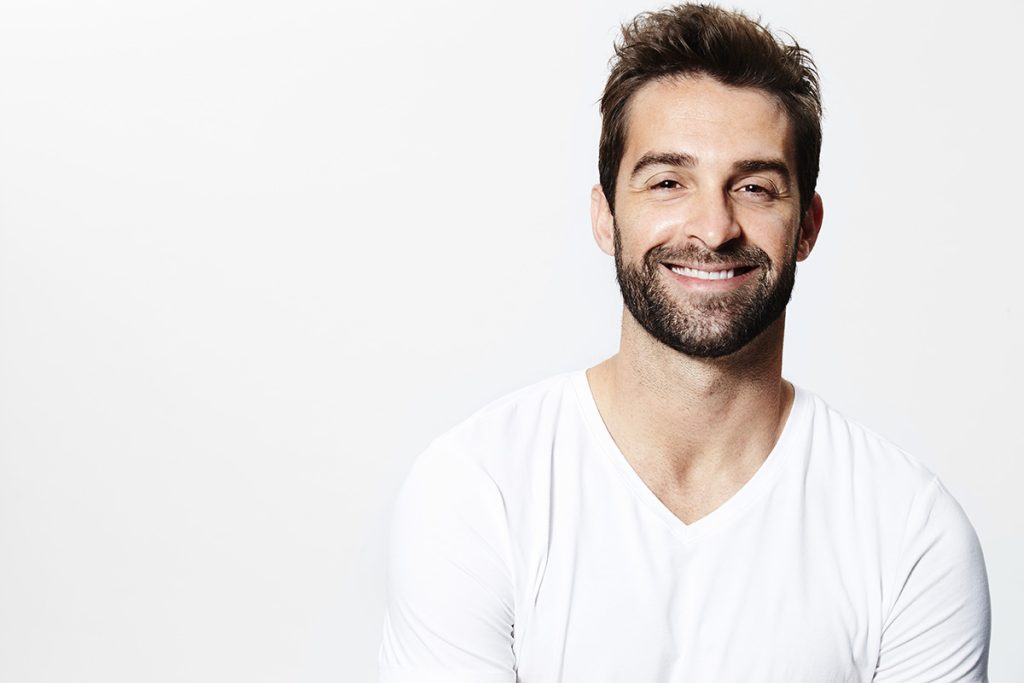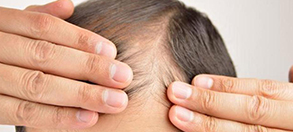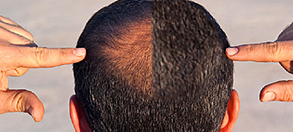Facial hair transplant is a cosmetic procedure that involves harvesting hair follicles from a donor site on the patient’s body and transplanting them to the facial area where hair growth is desired. The transplanted hair will continue to grow and can be styled and groomed like natural facial hair.
This procedure is commonly used to address patchy or thinning facial hair and help fill in scars or other other areas that are biologically lacking. The results of a facial hair transplant can be long-lasting and can provide patients with a more full and symmetrical beard, mustache, or eyebrows.
In Houston, TX, patients have at their fingertips the hair transplant expertise of double board-certified surgeon Dr. Goran Jezic. At Houston Hair Transplant Center, he provides patients with solutions to the most complex facial hair transplant cases, utilizing the latest techniques and technology to achieve natural-looking results. Dr. Jezic’s approach to facial hair transplantation is tailored to each patient’s unique needs, considering factors such as hair texture, growth pattern, and overall facial structure. With his extensive training and experience, Dr. Jezic has helped countless patients achieve their desired facial hair goals, from filling in patchy areas to creating a full beard or mustache. If you’re considering a facial hair transplant, schedule a consultation with Dr. Jezic to learn how he can help you achieve the look you’ve always wanted. Call 713-864-2300 to get started.
Patients curious about the advanced hair restoration and transplant procedures Dr. Jezic offers can learn more on the Houston Hair Transplant Center blog.
About Facial Hair Transplants
Facial hair has long been associated with masculinity, and for many men, having a complete and well-groomed beard or mustache is a source of pride. In recent years, the popularity of facial hair has only grown, with more and more men seeking ways to enhance or reconstruct their beards and mustache. This trend can be attributed to a growing awareness of the impact of physical appearance on personal confidence and social success.
According to the 2020 International Society of Hair Restoration Surgeons (ISHRS), almost 15% of hair restoration procedures in men target non-scalp areas of the body, with the beard and mustache accounting for 5% of these procedures. [1] This percentage is nearly double what it was in 2012, highlighting the increased acceptance and demand for facial hair transplants.
If you’re one of the millions of men worldwide who struggle with patchy or thinning facial hair, you may have considered growing a beard or mustache, only to be disappointed by the results. Fortunately, advances in medical technology have made facial hair transplants a safe, effective solution for restoring hair to your face.
What is Follicular Unit Extraction?
Over the last two decades, significant advancements have been made in facial hair transplant techniques, resulting in refined and cosmetically pleasing results. One of those advances is Follicular Unit Extraction, or FUE, which involves extracting grafts as individual follicular units using a two or three-step method. In contrast, the “strip method” (another term for the conventional Follicular Unit Transplantation hair transplantation technique) involves surgically removing a strip of tissue from the donor area of the scalp, usually the back or sides of the head, which contains hair follicles. The strip is then dissected under a microscope to obtain individual follicular units, which are then transplanted into the recipient area of the face (or scalp, with hair transplantation). The strip method is known for leaving a linear scar at the donor site, which the surrounding hair can conceal.
While the strip method is still commonly used and considered adequate, the FUE method has become increasingly popular due to its potential for less visible scarring. Furthermore, the recent integration of the automated FUE technology – Neograft – addresses some drawbacks of this method, enabling trained practitioners to perform over a thousand grafts in a single day. [2]
What are the Benefits of Facial Hair Transplants?
Facial hair transplants have several benefits patients in Houston will appreciate:
- Many people feel self-conscious or insecure about their lack of facial hair, and a facial hair transplant can help to boost their self-esteem.
- With a facial hair transplant, Dr. Jezic can customize the procedure to mimic the natural pattern and density of growth of the beard, mustache, or sideburn for a more customized and personalized appearance.
- Facial hair transplant offers long-lasting and permanent results.
- Modern hair transplant techniques, such as FUE, leave minimal scarring.
- Facial hair transplants are safer and have fewer risks than other cosmetic procedures.
- A fuller beard or mustache can positively impact a person’s social and professional life, improving their attractiveness and confidence in social situations or job interviews.
- Facial hair transplant can help hide scars from facial injuries by creating a fuller beard, mustache, or sideburn covering the affected area.
Our Houston center uses the latest hair restoration tools and techniques to perform facial hair transplants tailored to each patient’s needs and desired outcomes. Dr. Jezic works closely with each patient to ensure the final result is aesthetically pleasing and natural-looking. Contact us today to schedule a consultation and learn how we can help you achieve the facial hair you’ve long wanted.
Who is the Ideal Candidate for Facial Hair Transplant?
The ideal candidate for a facial hair transplant is someone who:
- Has thin or patchy facial hair
- Has suffered from a facial injury resulting in scarring
- Is looking to enhance their natural facial hair density for aesthetic reasons
Men unable to grow a full beard or mustache due to genetics or hormonal imbalances can also benefit from a facial hair transplant. The hormones testosterone and dihydrotestosterone (DHT) play a crucial role in the growth and maintenance of hair. [3] But unlike the scalp, where the hormone DHT can lead to hair loss, (as with androgenic alopecia), elevated levels of male sex hormones can actually improve the growth of hair elsewhere on the body, including the face! [4]
Candidates should be in good overall health, with no underlying medical conditions that may affect the outcome of the surgery. Additionally, the candidate should have realistic expectations about the procedure results and be committed to following the post-operative care instructions provided by the Houston Hair Transplant Center team.
People with certain medical conditions, such as diabetes or autoimmune disorders, may not be suitable candidates for facial hair transplants. Patients must discuss any medical requirements or concerns with Dr. Jezic during the initial consultation to determine if a facial hair transplant is viable.
Personal Consultation
A consultation for facial hair transplantation can be an exciting first step toward achieving your desired look. At the Houston Hair Transplant Center, Dr. Jezic and his team understand that every patient’s facial hair growth patterns and goals are unique. They approach each consultation with individualized attention and care.
During the consultation, Dr. Jezic will take the time to get to know you and understand your goals for the procedure. He will review your medical history and examine your facial hair’s density and growth patterns. Dr. Jezic will then provide professional recommendations on the most suitable hair transplant technique based on your unique facial features, any present scarring, and hair loss pattern.
Dr. Jezic and his team pride themselves on their commitment to personalized care and patient satisfaction at the Houston Hair Transplant Center. They utilize state-of-the-art techniques and technologies to provide the most natural-looking and long-lasting results possible.
If you’re considering a facial hair transplant, don’t hesitate to schedule a consultation with Dr. Jezic at the Houston Hair Transplant Center today. You can reach our team at 713-864-2300 to schedule an appointment or learn more about their services.
Preparation
Preparing for your procedure can help you achieve optimal results. Here are some general tips to help you prepare:
- Stop smoking – Smoking can hinder healing and increase the risk of complications. It is recommended that patients quit smoking at least two weeks before and after the surgery.
- Avoid alcohol and blood-thinning medications – Alcohol and medications such as aspirin or ibuprofen can increase the risk of bleeding during the procedure. It is recommended that patients avoid these substances leading up to surgery.
- Arrange for transportation – Patients undergoing a facial hair transplant should not drive themselves home after the procedure, as the sedatives used during the surgery may cause drowsiness. It is recommended that patients arrange for transportation to and from the clinic.
- Plan for time off – Patients may need to take some time off work or other activities to recover from the procedure. It is recommended that patients plan for at least a few days of rest or more after the surgery.
Our team will provide specific instructions on preparing for the surgery, such as washing the face and scalp before the procedure. Patients must follow these instructions carefully to ensure the best possible outcome.
The Procedure
Neograft allows for precise and efficient extraction of individual hair follicles from the donor area, which are then carefully implanted in the recipient area to create a natural-looking, full beard, sideburns, goatee, or mustache.
The Neograft procedure begins with the patient comfortably seated in the treatment room. The donor area on the scalp is then shaved, and a local anesthetic is administered to numb the area. The Neograft device is then used to gently and precisely extract individual hair follicles from the scalp, which are carefully sorted and prepared for implantation.
The recipient area, where the patient desires fuller facial hair, is carefully marked and numbed with a local anesthetic. The extracted hair follicles are then implanted into the recipient area using micro-incisions. Dr. Jezic meticulously performs the implantation process to ensure that each hair follicle is placed at the correct angle and depth to achieve the most natural-looking result.
Recovery After Facial Hair Transplant
Recovery allows the newly implanted hair follicles to heal and grow properly. This critical period is typically minimal; most patients can resume their daily activities within a few days.
Immediately after the procedure, patients may experience mild swelling and redness in the donor and recipient areas. This is a normal response to the surgery and typically subsides within a few days. Patients may also experience discomfort or mild pain, which can be managed with over-the-counter pain medication.
During the first week after the surgery
- Avoid activities that may cause sweating or excessive movement in the facial area, which can interfere with healing.
- Avoid touching or scratching the transplanted area, which can damage the delicate hair follicles and affect the outcome.
After the first week, patients can resume normal activities but should still avoid strenuous exercise and activities that may cause sweating for a few more days. Patients should also be careful when washing their face and scalp and follow the specific post-operative instructions provided.
What are the Results of Facial Hair Transplant?
Transplanted hair follicles may initially shed in the weeks following the surgery. This can be alarming for patients, but it is a normal part of the healing process. The transplanted hair follicles go through a phase of shock loss, which is the shedding of the transplanted hair follicles due to the stress of the surgery. [5]
However, patients should not be discouraged, as new hair growth should begin within a few months. Patients can expect to see significant improvement in the fullness and density of their facial hair within six to twelve months, depending on the rate of hair growth and the extent of the transplant.
The results of a facial hair transplant using Neograft are generally very natural-looking, as the hair follicles are individually implanted at the correct angle and depth to blend seamlessly with the surrounding facial hair. Patients can expect a fuller, thicker, and more evenly distributed beard or mustache that looks and feels natural.
The results of a facial hair transplant are long-lasting, as the transplanted hair follicles are taken from the patient’s scalp, where they are genetically programmed to continue growing throughout the patient’s lifetime. However, patients should be aware that the transplanted hair follicles will still be subject to the effects of aging and hormonal changes, which can affect the density and quality of facial hair over time.
What is the Cost of Facial Hair Transplants in Houston, TX?
The cost of hair transplantation for facial hair will depend on the methods used and the extent of the hair loss. Patients can learn more by calling 713-864-2300 or reaching out online, and we will be in touch shortly.
With Dr. Jezic and his groundbreaking techniques, men in Houston can embrace their masculinity with a thick, luxurious beard or mustache that complements their features and enhances their overall appearance. We look forward to your call!
References
- Dua K, Verma V, Dua A. Beard and Moustache Reconstruction. Indian Journal of Plastic Surgery. 2021;54(04):483-488. https://doi.org/10.1055/s-0041-1739248
- Dua A, Dua K. Follicular unit extraction hair transplant. Journal of cutaneous and aesthetic surgery. 2010;3(2):76-81. https://doi.org/10.4103/0974-2077.69015
- Miranda BH, Charlesworth MR, Tobin DJ, Sharpe DT, Randall VA. Androgens trigger different growth responses in genetically identical human hair follicles in organ culture that reflect their epigenetic diversity in life. The FASEB Journal. 2018;32(2):795-806. https://doi.org/10.1096/fj.201700260RR
- Ustuner ET. Cause of Androgenic Alopecia. Plastic and Reconstructive Surgery Global Open. 2013;1(7):e64. https://doi.org/10.1097/gox.0000000000000005
- Kite, Amy MD; Lucas, Valentina S. PhD, ANP-BC. Hair Transplant: A Basic Review. Plastic Surgical Nursing 35(2):p 66-68, April/June 2015. | DOI: 10.1097/PSN.0000000000000094



